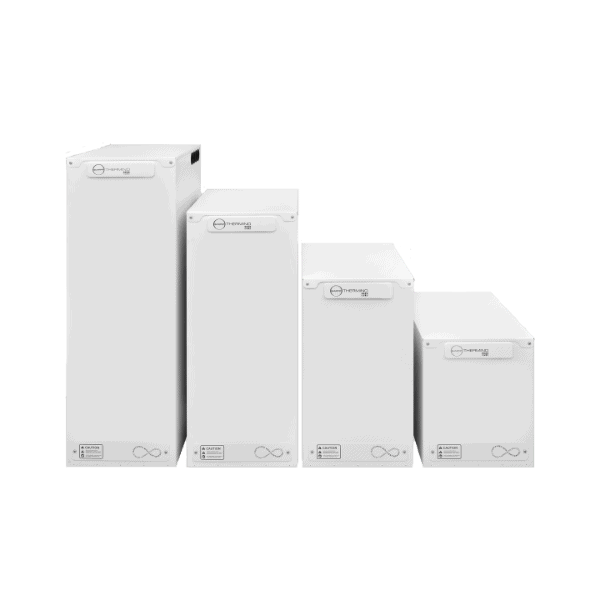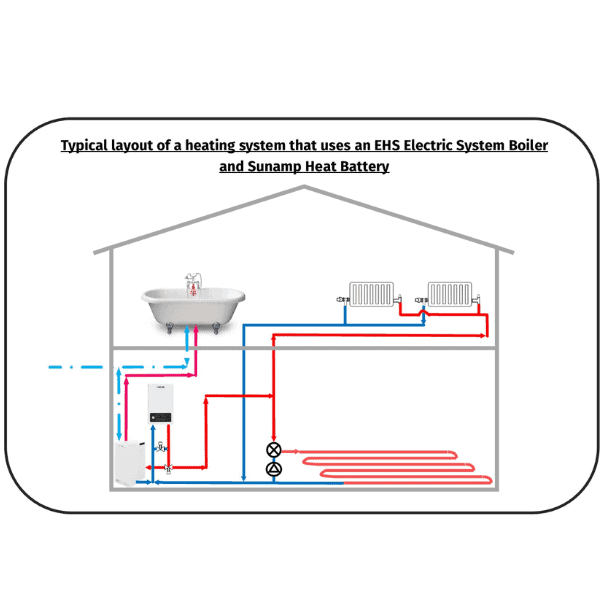- 0345 8628699
- info@ehs-heating.com
- Mon - Fri: 9:00 - 17:00

Sunamp’s thermal batteries use a phase change material (PCM), to efficiently absorb and release thermal energy during a melting and freezing process in a similar way to the gel in a pocket handwarmer. They can be charged directly by electricity (including solar PV) or indirectly by boilers or some high heat heat pumps.
They are up to 4 times smaller than the equivalent hot water cylinder, requiring little routine maintenance. Their sleek, super-compact design means they look good in any home and free up valuable storage space.
The Sunamp Thermino is designed to be retrofitted to existing hot water systems or it can be specified for use in new build projects. Modular and scalable, the batteries can be connected in series or in parallel to increase heat storage capacity.
Thermal Storage Schematic

Whichever power source you’re working with on your project, the Sunamp can be used to store renewable energy for use at anytime, or to save money by charging the heat batteries electrically during off-peak periods.
The Sunamp system can be tailored to meet exact requirements and additional storage can easily be added in the future if required.

Thermal batteries generally make use of a Phase Change Material (PCM) to store thermal energy. The PCM can store a large amount on energy at a set temperature in a small amount of material, which gives it the advantage of a small drop off in temperature over a set flow. has an added advantage they work by heating the PCM to a set temperature and then passing mains water through the pipework that flows through the PCM, which gets heated and in much the same way as a buffer store.
By far the most popular and oldest of the thermal stores is a hot water cylinder. You will probably remember when we all had a copper cylinder in the airing cupboard covered with a thermal jacket (before we sold our souls to the gas combi boiler). As the name suggests, this is a store that holds and supplies all of your potable hot water needs within a property. There are hundreds of different types and sizes depending on your energy sources, their capabilities and the your daily requirement for hot water.